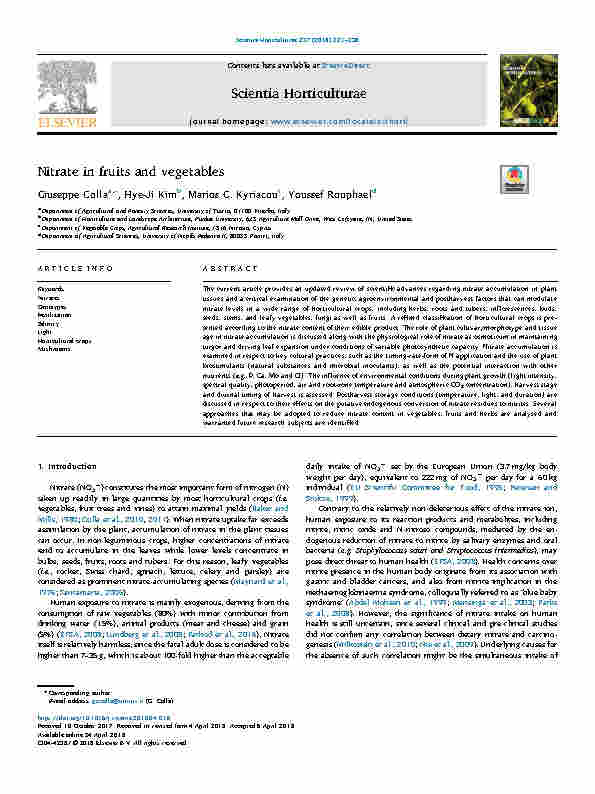Article Nitrate in fruits and vegetables
27/08/2024
DOCUMENT DESCRIPTION
The current article provides an updated review of scientific advances regarding nitrate accumulation in plant tissues and a critical examination of the genetic, agro-environmental, and postharvest factors that can modulate nitrate levels in a wide range of horticultural crops, including herbs, roots and tubers, inflorescences, buds, seeds, stems, leafy vegetables, fungi, as well as fruits. A refined classification of horticultural crops is presented according to the nitrate content of their edible products. The role of plant cultivar/morphotype and tissue age in nitrate accumulation is discussed, along with the physiological role of nitrate as an osmoticum in maintaining turgor and driving leaf expansion under conditions of variable photosynthetic capacity.
Nitrate accumulation is examined with respect to key cultural practices, such as the timing, rate, and form of nitrogen application, the use of plant biostimulants (natural substances and microbial inoculants), and the potential interaction with other nutrients (e.g., phosphorus, calcium, molybdenum, and chlorine). The influence of environmental conditions during plant growth (light intensity, spectral quality, photoperiod, air and root-zone temperature, and atmospheric CO2 concentration), harvest stage, and diurnal timing of harvest is assessed. Postharvest storage conditions (temperature, light, and duration) are discussed in relation to their effects on the putative endogenous conversion of nitrate residues to nitrites.
Several approaches that may be adopted to reduce nitrate content in vegetables, fruits, and herbs are analyzed, and future research subjects that warrant further investigation are identified.


